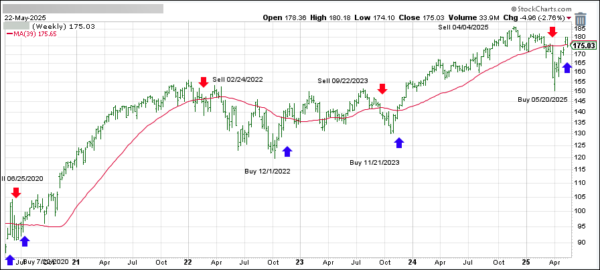
- Moving the market
Nvidia lit the fuse this morning with a strong earnings report, but the rally didn’t quite explode.
While the chip giant’s results gave markets an early boost, excitement faded as traders turned their attention to trade policy uncertainty.
A federal court ruling struck down Trump’s “reciprocal” tariffs, saying he overstepped his authority—raising fresh doubts about how future trade negotiations might unfold.
Some analysts brushed it off as a “nothingburger,” and the market seemed to agree, ending the day with modest gains.
Looking at the broader picture, the April/May short squeeze appears to be losing steam.
Nvidia gave back more than half of its post-earnings pop, bond yields dipped (with the 7-year hitting a two-week low), and rate-cut expectations shifted—up for 2025, down for 2026.
The dollar softened, gold flirted with $3,350 but didn’t quite get there, and Bitcoin stumbled after an early surge, sliding toward $106K despite continued ETF inflows.
So, the big question now is: will tomorrow’s PCE inflation reading be soft enough to give the market a fresh reason to rally?
Read More




